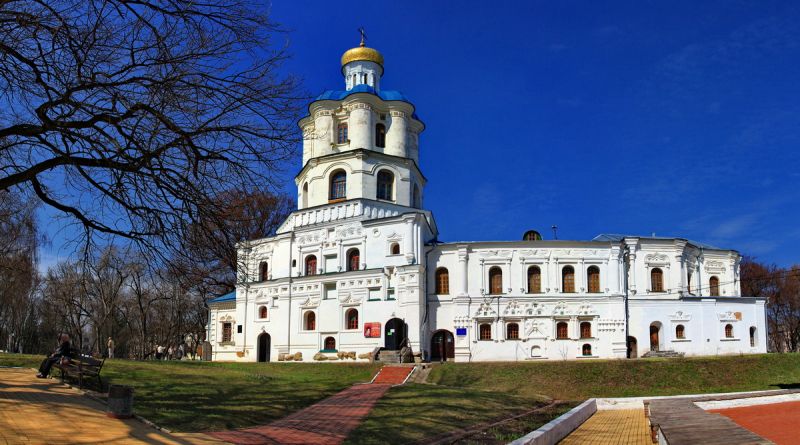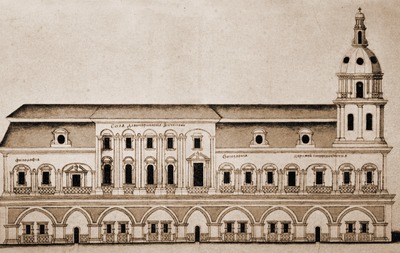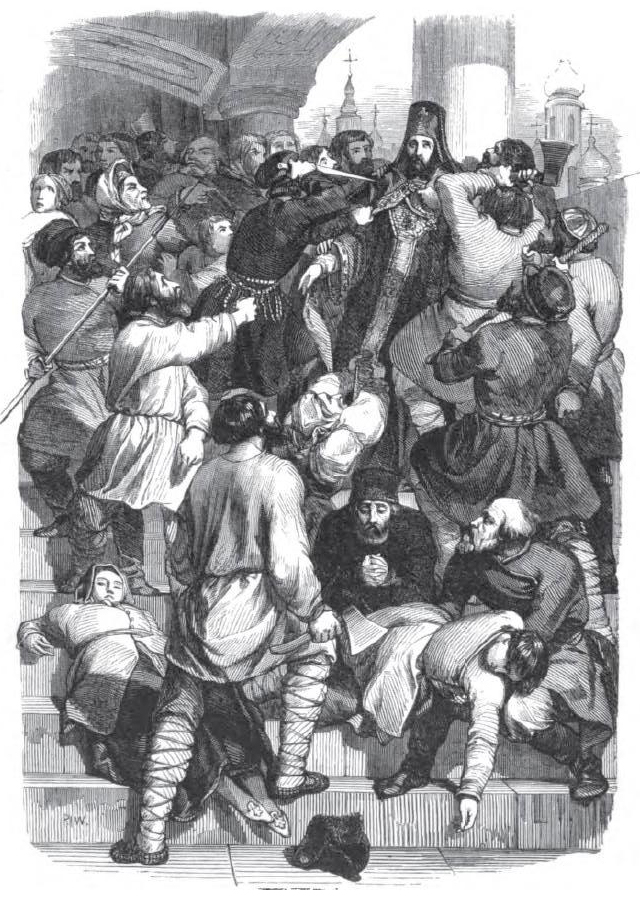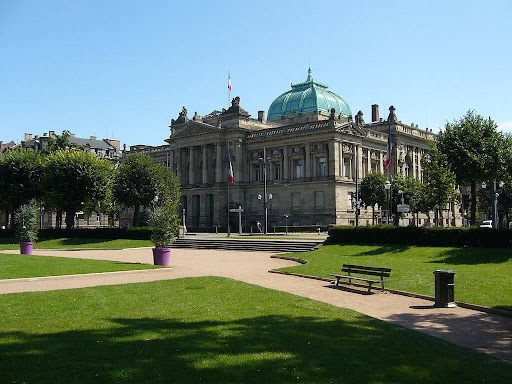ROOTS AND WINGS with Boris Burda: Daniil Samoilovich from Chernihiv region – the founder of domestic epidemiology

When creating a collage, a painting by Julia Apolskaya was used
WE OWE THEM
Our time is now funnier than usual, although before, it seemed, no one allowed us to get bored. We wear masks, rinse our hands with disinfectants, are in a hurry to get vaccinated or actively broadcast it on all social networks, virologists are dissemling that vaccinations only harm – it is a pandemic, in general.
But life goes on. Restaurants will be closed, then slightly opened. Mass events will be banned, allowed, then forgotten, the overwhelming majority of sick people get nervous and tormented, but still recover – there is someone to treat them.
These are all our doctors. In the morning they go to work in places of increased danger, sometimes they become infected, but they do what they can – by the way, it may not be so little. I had been quite seriously ill, if not for them – I wouldn’t almost certainly have survived, but here you go – I am healthy again, at least almost.
The hero of my last publication, the chemist Dan Sheсhtman, Nobel laureate, named one of the most important professions – teachers. I dare add that doctors are just as important. It was not in vain that the Strugatskys wrote that in the world government of the bright future, most of all there will be doctors and teachers.
The history of our country also knew remarkable doctors – these are Vladimir Khavkin and Daniil Zabolotny. But the story of Zabolotny’s namesake and colleague, according to which a multi-part action movie would have been filmed in a more sensible country long ago, is not known to anyone. And in vain!
SURNAME FROM PATRONYMIC
He was born into the family of the priest Samuil Sushkovsky in the village of Yanovka, Chernihiv province. Now it is Ivanovka – it was founded under Poland, and since it had come under the Russian Empire, even such details were replaced. Not so bad – the priest is usually the most cultured person in the village.
Boris Slutsky said well about the priest’s children of that time: “In that era and time, the priests went on a rampage and shone as long as they burned”. Consciously literate, almost certainly getting an education, they pushed the horizons of society far beyond the spiritual sphere.
The priest Samuil and his wife Agafya raised their son as it should be, planted in him a sharp mind and healthy curiosity. And when the time came to acquire a profession – at first they wanted him to follow in his father’s footsteps. He was sent to study at the Chernihiv Collegium, the first educational institution of spiritual education in the Russian Empire on the left bank of the Dnieper.

At just 12 years old, he graduated from this collegium, having received not only spiritual knowledge, but also mastered the beginnings of poetics, rhetoric, philosophy, logic, dialectics, not to mention a number of language courses – Latin, Polish, Church Slavonic and Russian. They were prepared more than solidly…
He decided to continue his education (probably together with his parents) at the well-known Kyiv-Mohyla Academy. Admission there was considered such a serious step that students, as if leaving for a monastery, had to change their surnames. Twelve-year-old Daniil simply formed his new surname from his father’s name and became Samoilovich.

FROM HEALING SOULS TO HEALING BODIES
It seems that he graduated from this educational institution more than safely. A direct, clear and respected by the society road to the father’s profession was opened. It would seem that everything was decided – but suddenly a completely different life path was outlined, moreover, as a result of outside interference.
Sent from Saint Petersburg on behalf of the medical office of the Russian Empire, Professor Poletika (also, by the way, our fellow countryman from the old Cossack family), offered the best graduates who voluntarily wished to receive a medical education.
Daniil Samoilovich expressed such a desire and left Kyiv for Saint Petersburg to study medical sciences at the Admiralty Hospital School. For four years he learned the secrets of medicine there, helped doctors, looked after the sick, was on duty at night – he combined theory with practice.
In four years, he graduated from this educational institution and received the title of medical doctor (for us, it is about a paramedic). But two years later, Samoilovich was promoted to healer. How many doctors with medical education were there in the entire empire then? Well, if a few dozen…
WAR AND PLAGUE
Immediately after receiving the title of doctor, he received with it a unique position – he was appointed to lead the first female venereal hospital in the Russian Empire. There is no doubt that the young doctor had enough work, but the Turkish sultan ordered him to leave this position.
The reason for it was the next – Russian-Turkish war. Regimental doctors were more in demand than venereologists. Samoilovich was mobilized and sent to the theatre of military operations. His regiment was clearly lucky – morbidity and mortality in it fell markedly.
But it was not even the wounds from Turkish bullets and sabers that constituted his main problem – at the front he faced such a terrible enemy of the human masses as an epidemic. Moreover, it turned out to be an epidemic of one of the most acutely infectious and deadly diseases – the plague.
Then the plague was considered to be transmitted with air masses and fought with it, based on this theory. For example, they cut down trees and broke fences so that the bad air was blown away by the winds. They fired cannons and rang the bells so that the air shuddered and improved its health. It didn’t help.
PLAGUE IN MOSCOW
In 1770 Samoilovich was sent as a doctor to the garrison of Orenburg. He was on his way there from Bucharest, passing through Moscow, and ended up in it just at that terrible time, when a terrible guest already familiar to him reached it. The plague didn’t need any road trip – people transported it themselves.
Samoilovich, along with his colleague and fellow countryman Pyotr Pogoretsky, did not try to quickly get his feet out of a dangerous place – he voluntarily stayed to fight the epidemic. Immediately he was appointed to head first one, and then two infectious diseases hospitals.
Already understanding something about where the plague comes from, he told all the hospital staff in charge to wear dressing gowns dipped in vinegar and smear their shoes with tar. He already understood that the plague is not transmitted through the air, but contagiously, through personal contact with the patient.
With the then level of medical knowledge, the population believed that the icon of the Mother of God on the Barbarian Gate of the Kremlin would better protect them. Samoilovich absolutely correctly advised to remove the icon, since such treatment did not give anything but new infections.
Archbishop Ambrose followed his advice, but it only led to a terrible plague riot. The crowd found the archbishop in the choirs of the church of the Donskoy Monastery, they began to interrogate him, “Why is he mortifying the Orthodox people?” and then they have been torturing him for a long time until he was beaten to death.

The enraged crowd also reached the hospital, where Samoilovich was, who did not leave the sick. They also began to beat him and would have beaten to death if he had not dissociated by saying that he was only a doctor. Later, Daniil wrote, “I miraculously escaped from the ungrateful who sought my destruction”.
EXPENSIVE EXPERIENCE
Samoilovich suffered from the plague, not only becoming a victim of vandalism by an ignorant crowd. During the epidemic, he even managed to get infected and get sick. Fortunately, the bubonic plague then killed only four out of five, and he was lucky – he was ill and survived.
Insofar as he and several others who had been ill were not infected again, he came to the conclusion that a person who had been ill with a weakened plague would not get sick at all, that is, he came up with the idea of vaccinations almost at the same time as the creator of the smallpox vaccine, Edward Jenner.
He even made experiments in this regard (for a start on himself), but not everything is simple with it – the fame of the creator of the anti-plague vaccine came to Vladimir Khavkin more than a hundred years later. But his ideas of disinfection with “fumigating compounds” clearly worked – to prove it, Samoilovich put those who died from the plague on the fumigated clothes (fortunately, without harm).
He even suggested a microbe – the causative agent of the plague and tried to see it through a microscope. But the microscopes of that time did not give the required magnification, and only in 1894 the Frenchman Yersen and the Japanese Kitasato Shibasaburo confirmed his absolutely correct assumption.
But the measures that he proposed and actually implemented, gave a result – the epidemic was defeated. He had the right to write later, “The plague is a sticky disease, but conveniently curbed and suppressed, and therefore should not be as dangerous for the family as it is usually portrayed”.
ABROAD
Feeling the need to improve the level of his medical education, in 1776 Samoilovich went abroad to study. Tellingly, on his own expenses – the authorities did not find money for such a purpose. Well, what did he have besides brains?
He began his studies at the University of Strasbourg and graduated from the University of Leiden, where he defended his doctoral dissertation. In a fairly short time, it was reprinted twice. By the way, he was the first among the doctors of the Russian Empire to publish his scientific works abroad.

The most popular of them were Thoughts of Plague Contamination and Thoughts on the Plague That Caused Devastation in the Capital City of Moscow, which were published in Strasbourg, Leipzig and Paris. Unfortunately, with the development of contacts with distant countries, the topic has become relevant.
And his doctorate was devoted to a completely different branch of medicine – obstetrics. After its publication, Samoilovich has worked for three years in obstetric clinics in France, England and Germany, believing that the achievements in this area simply need to be borrowed from his country.

He returned to the Russian Empire as a member of 13 surgical academies – Paris, Mannheim, Turin, Padua, Marseille… you can’t remember everything. Samoilovich sent his works on obstetrics personally to Catherine II, asking her to create schools for training midwives.
But Catherine, even though she was a woman, rejected all his offers and did not even provide him with vacancies. They say that she was informed about his free European assessments of her rule. How many children and women died from it during childbirth is difficult even to estimate, but it is clear that there are quite a few of them…

SHIELD OF THE SOUTH
Samoilovich, of course, did not remain without work. Constant contacts, not necessarily military, with the Ottoman Empire, in some regions of which the plague was not transferred, kept the Black Sea region under constant threat. In Kherson, in 1783, four thousand people died of plague.
Catherine wrote to Potemkin, “There was a rumor that the ulcer was still raging in Kherson and that it had devoured most of the Admiralty workers. Do a mercy, eradicate the Kherson ulcer”. It immediately became clear to Potemkin who should be contacted.

He wrote to Samoilovich, “The well-known art and diligence in the administration of your title prompted me to entrust you with the main thing … observation of all those ways that you need to extinguish and eradicate sometimes sticky diseases that opened up”.
Samoilovich immediately began with a firm hand to introduce quarantine measures, and soon the number of recovered people reached an unprecedented level for that time, which was even written about in the European press. He eliminated outbreaks of plague in Kremenchug, Kherson, Crimea and Odessa.
The commander of the Kherson garrison wrote, “Dr. Samoilovich was especially distinguished, who by his own example… saved a great number from death and made very important discoveries about the kind of infectious disease” and proposed to award him with the Order of St. Vladimir.
IN BATTLES
The Russian-Turkish wars do not even think to end – the next one begins. From the first days of the war, Samoilovich went to the front, in the battle of Kinburn he provided medical assistance to Suvorov, who received two wounds, right on the battlefield, and then he has been nursing him for two months.
A little later, in his official report to Potemkin, the recovered Suvorov wrote, “Doctor Samoilovich’s works and excellent deeds experienced in these places are not unknown. And I can justly say that I am very pleased with his art and work”.

He took part in other equally important battles – both in the capture of the Akkerman fortress, and in the famous assault on Ishmael. Thanks to his efforts, the number of wounded survivors increased dramatically. Both Suvorov and Rumyantsev noted his undoubted merits in their reports.
But they were in no hurry to award Samoilovich in Saint Petersburg – the submission to the Order of St. Vladimir was given a move only nine years later. Perhaps some of his careless statements reached the Empress’s ears? It doesn’t look very much like her, but go and check it out…
CAVIL
But, unfortunately, a person who does not steal, does not idle and does business, always makes enemies among those who do not behave like that. Samoilovich dismisses the thieving pharmacist Dietrich Dreyer – “careless, illiterate and always drunk”, and he answers with a denunciation!
Samoilovich’s enemies slander and demand his release. The desperate doctor writes to Catherine, reminding that more than 16,000 servicemen were treated in the hospital he had equipped, 13,824 were cured and there are 1,028 left at the moment – the result was wonderful at that time!
He frankly writes, “I am weak, sick, I have a wife and two small children. I ask you to find a job or assign me a pension”. But he does not receive an answer. There is no work, he has forced to live in his native Yanovka for two years, expecting that it will not last forever and a doctor of his level will still be needed.
Honor and profit lie not in one sack. Samoilovich lived his whole life extremely modestly, spent a considerable part of his earnings on traveling – he was not entitled to travel money. The publication of scientific works also did not bring income, but required a lot of money.
LAST YEARS
All the same, a specialist of this level could not remain unclaimed. From 1793 to 1799, Samoilovich worked as the chief physician of quarantines in the south of Ukraine, and from 1800 he was appointed inspector of the Black Sea Medical Board in Nikolaev, where he worked until the end of his life.
He finally found time to formalize the research results. The final work on the fight against the plague has grown to a four-volume edition. The book The Current Method of Treatment with instructions for the common people to be cured from the gnawing of a mad dog and biting a snake has been written.
In November 1804, despite the cold winter, Daniil Samoilovich set out on a thousand-kilometer inspection trip to the cities of the Black Sea region. He examined hospitals, pharmacies and infirmaries in the visited cities, checked the work of medical personnel – there was enough work…
He returned to Nikolaev already sick. Judging by the descriptions, it was infectious jaundice, Botkin’s disease, which even now, with modern means of treatment, is considered a serious disease. On February 20, 1805, the disease seized him, and he left this world.
WHAT LEFT
Do they remember this wonderful doctor now? In general, do not forget – it would be too much. In Nikolaev and in his native village of Yanovka (now Ivanovka) streets are named after him. He was proclaimed an honorary citizen of Kherson, and his memorial plaque was opened in Nikolaev.
In 1969, a scientific and a practical conference was held in Nikolaev dedicated to the 225th anniversary of his birth. At the same time, a monument to Samoilovich was unveiled on the territory that now belongs to the regional hospital. Please note – this monument is the only one so far.

In 1993 at the Kyivnauchfilm studio in the series Unknown Ukraine. Medicine in Ukraine – a film was made about Samoilovich under the title He Saved Us from the Plague. More cinema did not address the facts of his biography. But there would be enough material for a blockbuster!
In general, I cannot say that he is forgotten, but to say that they remember him enough is also not true. Maybe it suggests that we are so rich in wonderful people that we can forget about figures of Samoilovich’s level? I’m afraid it indicates something else…
All illustrations from open sources
